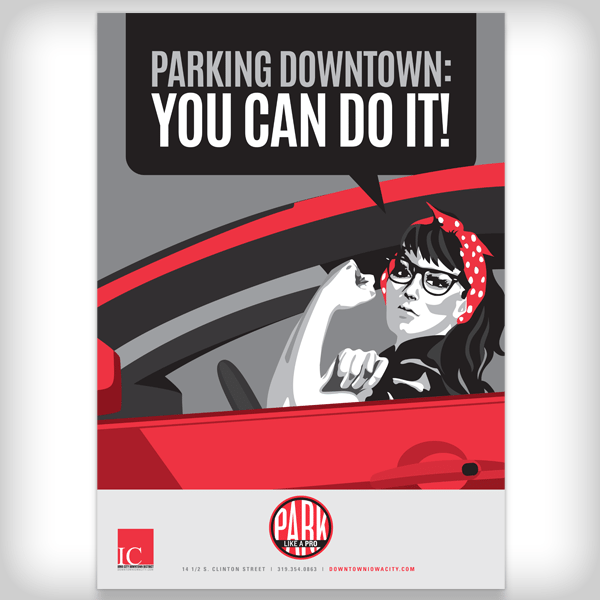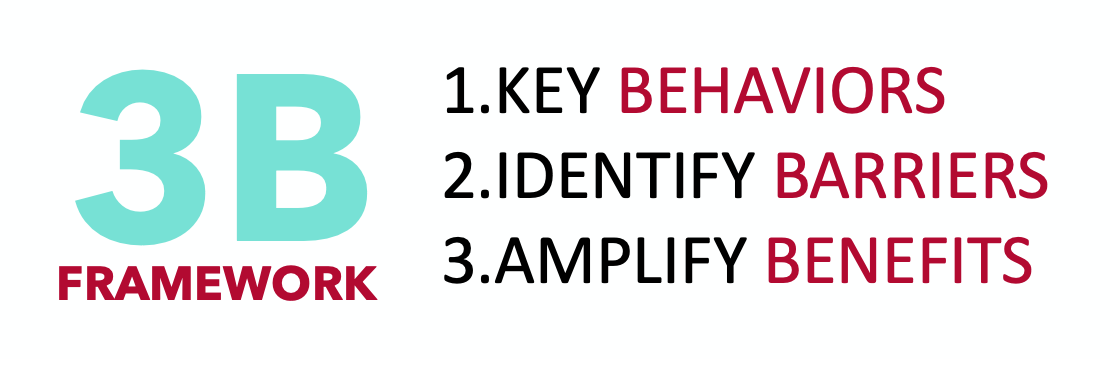This is the third time we’ve updated this post—it’s one of those blogs that has evolved as our client base has over the years. This time our refresh incorporates more behavioral science tactics and focuses on two of the “Three Bs” (no, we’re not talking about your college roommates) in changing how people make a decision: Behaviors and Barriers.
TL;DR: Make it as easy as possible for your audience to find and do business with you by understanding and ruthlessly removing friction.
Breaking Down Barriers
de Novo developed a Barriers Study exercise that we use to assess opportunities for growth and expansion, and a periodic health check-up with our clients. It takes a desire to improve, a willingness to lay bare your weaknesses, and the stomach to handle some unpleasant feedback.
We use the 3B Framework (blog link coming soon!) to help you identify areas in your processes that need attention, and we apply behavioral design practices to develop new ways to make it easier for your audience to take the right action.
So why aren’t your clients/customers/audience doing (insert action here)?
The answer, friends, is almost always “friction.”
Friction exists in our processes, and often builds on itself over time. Our process helps you to recognize them, and as our friends at Irrational Labs say “ruthlessly remove them.”
The first step is to focus on a key behavior (or a few behaviors) you want to change. This isn’t the end result, but an intermediate step that leads to the final result (transaction, sign-up, engagement, or otherwise). Next, we dive into the user or customer’s experience, getting super specific about every step that they need to take to complete the desired behavior.
From there you can begin to see places in the process where friction stops them from completing the behavior you want them to take. Every point of friction should be examined—and they come in many forms—from difficulties and unnecessary steps to a number of cognitive biases (Wikipedia lists more than 200!) that influence decision making. When you have friction, you have barriers. And when you have barriers you have three choices.
The BEST Choice: Eliminate the Barrier.
Eliminating barriers/friction points is always the best way to increase completion rates of whatever behavior it is you are trying to influence. And since there are usually lots of little friction points in the process, some of them are easily eliminated. Eliminating the need to click to find information, making the process faster, and decreasing the number of choices all are ways to eliminate friction.
Example: Cart abandonment in e-commerce is one of the trickiest issues to navigate. There are lots of reasons for it, but one of the best things an online business can do is look for ways to make it simple. If you are constantly putting barriers in the way of the completion of a sale, you will ultimately turn off more customers than you gain. Eliminate ABSOLUTELY everything that is unnecessary. Work to make the process simple while still secure, and easy to complete.
The Next Best Choice: Mitigate the Barrier.
When you can’t fully eliminate barriers due to requirements, software limitations, regulations or other scenarios, the next best thing you can do is mitigate the barrier to decrease friction. Offering things like a first-time discount or just reducing the number of clicks required to access something by one, or simplifying an onerous online order process by removing a few steps.
Example: Over the years, we’ve worked with clients to help them determine what holds business back. After working through a barrier exercise, with a client, we identified that their shifting policies and hours were causing confusion, but they couldn’t do away with appointments. We worked with them to standardize their hours, their schedule and their policies, to make it easier for customers to know what to expect.
The Choice That Everyone Thinks Works: Educate Around the Barrier
(It can work, but not in the way you think it can.)
If we just explain why our product is better, people will buy it, right? If we explain, ad nauseam, why doing X is good, they’ll magically do it, right?
Wrong. Educating around a barrier is rarely effective as a one-point strategy to increase uptake of a process. When education is your only strategy, then you need behavioral design tactics more than ever to change how your audience adopts it.
The basic principal of behavioral economics after all, is that human beings are irrational and make choices that are not in their best interest, on the regular. (I’m paraphrasing, with all apologies to Dr. Thaler.)
If education as a method were effective, we’d all be retired, with .2% body fat, low cholesterol, signed up to be organ donors, and no one would smoke, drink or be a fan of K-Pop or Nickelback.

Example: When we work with communities on public parking issues, a common barrier to publicadoption is that parking seems hard. We built the Park Like a Pro campaign with Downtown Iowa City to help ease people’s perceptions and educate the public on the availability and ease of parking downtown. The campaign used imagery, humor and social norming to break down the barrier people perceive when it comes to parallel and ramp parking, with a dose of sarcasm and delivered via social media and communications, through posters and collateral in and around downtown and beyond.
Conclusion: Get Focused on the Little Things
Taking an objective look at the barriers and biases that stop people from engaging with your brand is the first step to meeting your goals.
Do you feel as if your marketing strategy is holding you back? Contact us and let us put the power of data and analysis, together with business acumen, to change how you meet your goals.


